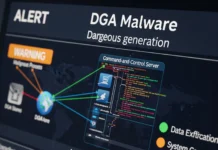With many uses in many different sectors, electromagnetic navigation sensors (EMNs) reflect a complex and fast growing technology. These sensors determine the location and orientation of an item relative to a reference point by use of electromagnetic fields. In domains where accuracy and precision rule, EMNs are especially significant because of their capacity. Three main uses of electromagnetic navigation sensors—medical navigation, industrial automation, and military and aerospace—are explored in this article
1. Medical navigation
Medical navigation is among the fields where electromagnetic navigation sensors find most useful uses. By means of real-time, precise monitoring of surgical tools and anatomical components, EMNs are transforming the way surgeries and other medical treatments are executed. In minimally invasive procedures, when sight and accuracy are absolutely crucial, this technology is very important.
For example, electromagnetic navigation sensors help surgeons in orthopedic surgery to precisely place implants and guarantee appropriate alignment of bones. This degree of accuracy enhances patient results and lowers the possibility of problems. In neurosurgery, too, EMNs enable the exact targeting of brain tissues, hence ensuring the safety and efficiency of operations like deep brain stimulation or tumor removal. Similarly, a parotid gland tumour surgeon relies on precision techniques to safely and effectively remove tumors while minimizing risks to surrounding structures.
Medical navigation uses electromagnetic navigation sensors not just in the operation room. They work also in cardiology and interventional radiology. EMNs direct catheters and other tools throughout the circulatory system in various disciplines, enabling precise operations like biopsies or stent placements. This program not only increases the precision of the treatments but also lessens the need of too-high radiation exposure, thus ensuring the safety of the operations for patients and staff members.
2. Manufacturing Automation
Industrial automation depends much on electromagnetic navigation sensors, which help to ensure the precision, safety, and efficiency of many operations. EMNs are included into robotic systems and automated guided vehicles (AGVs) in manufacturing to enable exact navigation and operation in challenging surroundings.
High-accuracy material and product movement around a production plant may be accomplished using AGVs fitted with electromagnetic navigation sensors. These sensors let the AGVs avoid impediments, follow predefined courses, and change with the times in the surroundings. Maintaining effective processes and lowering collision or misrouting-induced downtime depend on this skill. Moreover, the precision of EMNs lets AGVs run in tightly limited areas, thereby optimizing the use of the floor space at hand.
3. Aerospace Defence and Protection
Long leading innovators in embracing cutting-edge technology are the military and aerospace industries; electromagnetic navigation sensors are no exception. From navigation and guiding systems to unmanned vehicles and surveillance, these sensors provide the dependability and precision required for many important uses.
Precision-guided missiles (PGMs) using electromagnetic navigation sensors find usage in military operations. To attack certain targets, these weapons depend on precise placement, hence reducing collateral damage and raising the mission success rates. EMNs guarantee that PGMs can negotiate difficult terrain and maintain their trajectory even under demanding circumstances like GPS-denied surroundings. Modern combat, in which dependability and accuracy rule, depends on this capacity.
Conclusion
A transforming technology with broad uses in many sectors is electromagnetic navigation sensors. In medical navigation, they improve surgical procedures and other medical intervention safety and accuracy. They raise manufacturing process accuracy and efficiency as well as warehouse management in industrial automation. In the military and aerospace industries, they provide the dependability and accuracy required for systems of navigation, guiding, and surveillance. The uses of electromagnetic navigation sensors will probably grow as technology develops, thereby fostering more creativity and advancements in many other sectors including other ones.



































